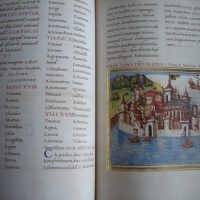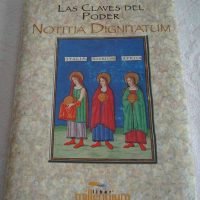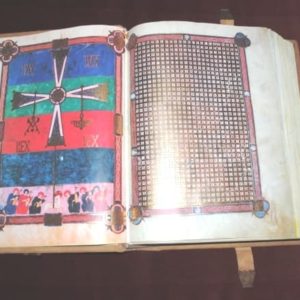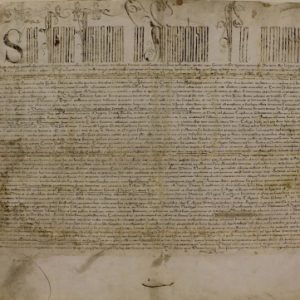Description
This magnificent codex contains, among its twelve treaties, a text of a journey, one that conveys the organizational structure of the Roman Empire through the hierarchical references to all the offices designated to conduct government action on behalf of the emperor, in as a representative of the authority.
This is what the shorthand Notitia Dignitatum. It was a perfectly conceived planning in order to maintain military and political dominance over as wide a geographical settings as diverse as its limits were Hispania at one end and the eastern basin of the Mediterranean on the other. The model created gave excellent results as an instrument of power in the service of a cause.
This is the reason that explains the interest shown in this work at various times in Western history.
The recipe was applied valid and effective until the twilight time of the Latin world (s. V) and therefore, when Charlemagne wanted to rebuild a new empire of Christian sign, this text regained full force, hence the copying and transmission ( s. IX).
At the same time, they were taking other writings from various sources in order to produce a work that was a compendium of knowledge, techniques and methods useful for the exercise of power. The result of this operation was a miscellaneous manuscript that brought together this knowledge. The person or persons who conceived this project had at their disposal copies beautifully illustrated old slow.
Accordingly, they proceeded to copy the text and to reproduce images with high purity. Thanks to these intermediaries has preserved for us a priceless testimony that transmits the one hand, a pragmatic political conception based on rationality and on the other, a virtual reconstruction of those same ideas in visual language. It is a rich symbolic imagery and propaganda loaded values.
It is logical, therefore, that this cultural legacy it was updated by the Italian humanists in the fifteenth century, at which the copy was made is reproduced here.
How many times have wanted to create a supranational political structure in Europe has turned its eyes to these texts fertile fruit of centuries of experience, and that connect us to our deepest classical roots. Today, as yesterday, the idea of a united Europe and close to the eastern Mediterranean is a political object-reaching and difficult to achieve.
Technical characteristics of the facsimile edition:
Fifteenth-century codex, kept in the National Library of Spain (Res. 36).
Facsimile format: 22.5 x 29.5 cm. 344 pages. It contains over 100 illuminations, many with gold and silver, richly decorated initials, round Italian humanist writing.
Special faux aged parchment paper. Elevation, folded and sewn by hand. Gold Cortes.
Leather binding with silver on wood shutters.
Notarized and numbered edition limited to 777 copies.
The facsimile is accompanied by a volume of study that includes a paleographic analysis codicological and Elisa Ruiz Garcia and artistic study of the work by Laura Fernandez.
24.5 x 34 cm format. 200 pages. It contains more than 100 illustrations and diagrams.
Both facsimile and study book are presented in a huge and spectacular jewel case closed book format, format 35.5 x 43 x 10, lined in leather. All set in perfect condition.
We have more copies available but only one for the indicated price.
Shipping by the buyer, upon request and destination. Ask us without obligation (indicating the reference of the article) any doubt, as well as any other facsimile or article that you are looking for.



























